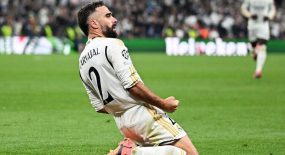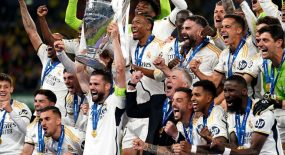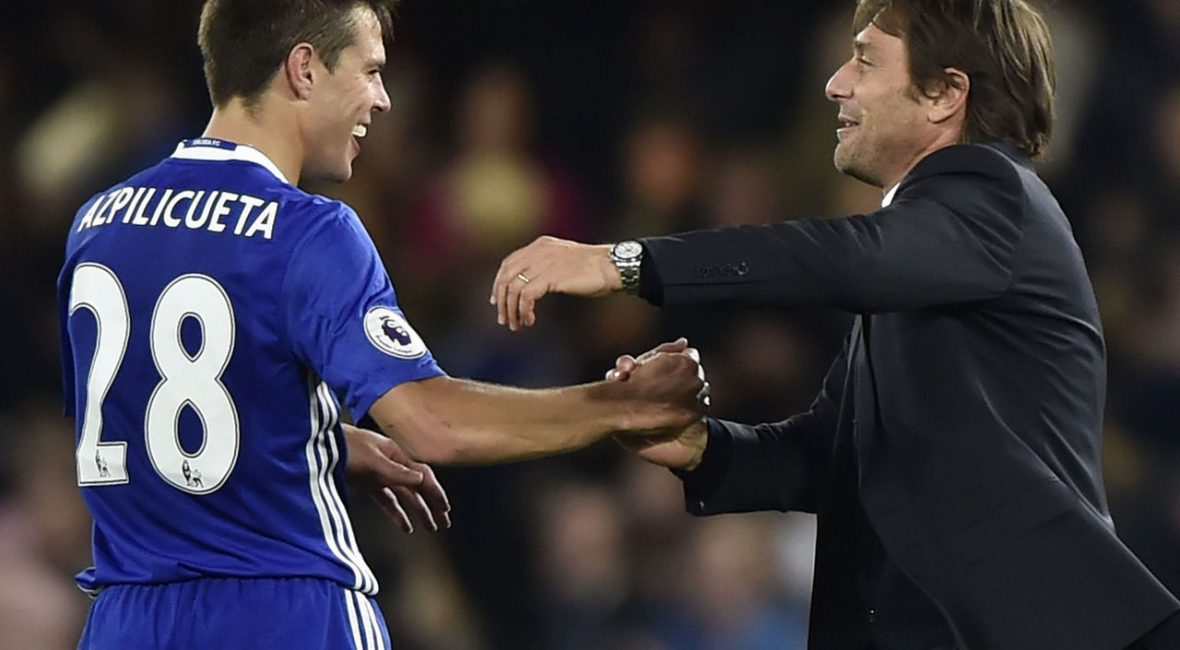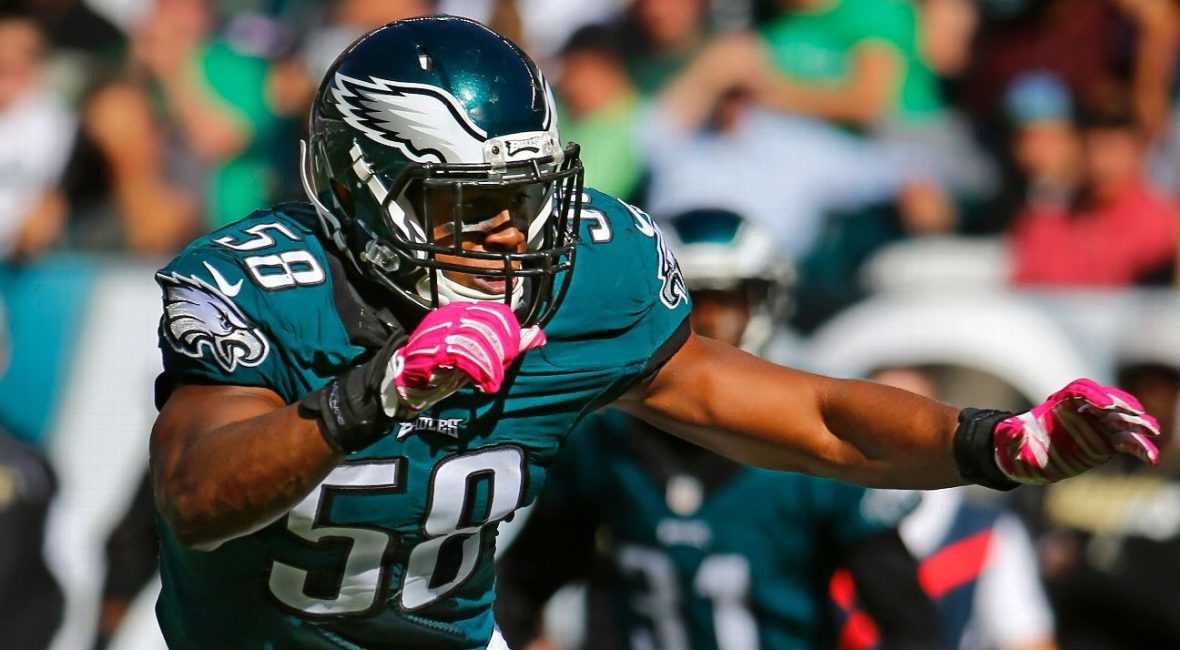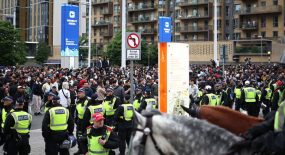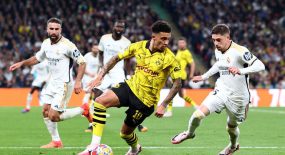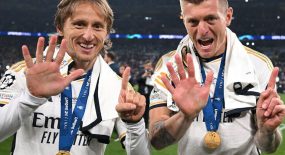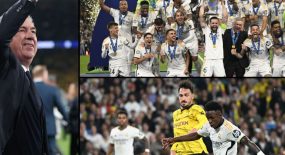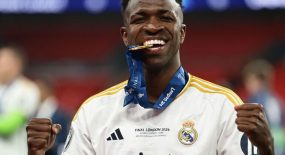Every footballer on the planet has blemishes – weaknesses in their game they wish didn’t exist. But what if they didn’t? What would the ideal player look like in every position? Plucking specific traits from various superstars, theScore is diving into the lab to build the perfect footballer.
Complete series:
In the third installment of our seven-part series, we’re assembling the perfect full-back, building an athlete that runs like the wind, tackles like N’Golo Kante, and gets forward to provide attacking impetus from a position that was long overlooked.
Versatility: Cesar Azpilicueta (Chelsea)

Cesar Azpilicueta is a manager’s dream. The Spaniard, affectionately known as Dave by Chelsea supporters, is steady as they come; Antonio Conte can jot his name down on the team sheet in any position across the backline, knowing the 27-year-old will provide solid service wherever he’s asked to deputise. A right-back by trade, he can slot in on the opposite side, or, as he proved all of last season, in central defence.
Positioning: Dani Carvajal (Real Madrid)

Playing opposite the best full-back on the planet can be a thankless job, but it’s possible that Dani Carvajal has, rather quietly, developed into the most consistently impressive right-back in the game today. Often tasked with playing more conservatively to compensate for Marcelo’s desire to rush forward, Carvajal has been vital in helping an attack-heavy Real Madrid side maintain balance. Not to say that he can’t get forward himself, of course. (See his spectacular 2016 UEFA Super Cup tally, which showcased absolutely everything you want to see out of a full-back).
Pace: Hector Bellerin (Arsenal)

Meep meep. Raw pace is the great equaliser, and Arsenal’s Hector Bellerin has it in spades. The young Spanish right-back can take chances going forward, knowing that his absurd straight-line speed allows him to make up the distance and race back into defensive position. The ideal full-back needs to be a speed demon, and that description is consistently attached to the 22-year-old.
Stamina: Antonio Valencia (Manchester United)

Antonio Valencia is a physical marvel. The converted winger has blossomed into a dominant force at full-back for Manchester United, with his blend of power, pace, and stamina making the Ecuadorian international an unrelenting presence down the right flank for the Red Devils. Spending all that time playing at altitude for his country seems to have turned Valencia into an indefatigable machine.
Dribbling: Alex Sandro (Juventus)

It’s no accident that Chelsea’s been sniffing around Juventus in a bid to make Alex Sandro the most expensive defender in football history. The 26-year-old, who begins our run on excellent left-footed Brazilians, has been one of the Bianconeri’s key attacking cogs since ripping the starting job away from Patrice Evra and solidifying himself as one of the first names on Massimiliano Allegri’s team sheet. He’s not a particularly flashy dribbler – he favours feints and clever jukes over fancy stepovers – but he’s certainly effective.
Tackling: Filipe Luis (Atletico Madrid)

If you’re going to play for Diego Simeone, especially in a position like full-back, you’d better be capable of delivering a crunching tackle that will both leave your opponent on his backside and result in a turnover that can launch a quick counter-attack. Few are better at doing just that than Filipe Luis. Now 31, the Brazilian remains a superb, if sometimes unnecessarily ferocious, tackler. Among full-backs who made at least 24 appearances last season across Europe’s top five leagues, only one player (Benjamin Henrichs) made more tackles per 90 minutes than Luis’ 3.5.
Attacking flair: Marcelo (Real Madrid)

(Photo courtesy: Getty Images)
Simply the best. Essentially a No. 10 who happens to play left-back, Marcelo is equally likely to pop up in a central attacking spot as he is down the wing, the hyperactive star always looking to drive forward and link up with his attackers. His first step is deadly, creating space for crosses, slick passes, and shots, and, in true Brazilian fashion, he’s delightful as they come with the ball at his feet.
Crossing: Benjamin Mendy (Manchester City)

Manchester City splashed a reported record €57.5-million fee to pry Benjamin Mendy from AS Monaco, and as a result, Citizens everywhere will be treated to watching one of the game’s elite crossers at the Etihad. The Frenchman, 23, completed 1.6 crosses per 90 minutes last season, one of the top marks across Europe for full-backs who made at least 24 appearances. Even as teams continue to use advanced metrics to shift toward more efficient attacking methods, having a full-back who can deliver a perfect cross remains a key element of the sport.
(Photos courtesy: Action Images, unless stated otherwise)




